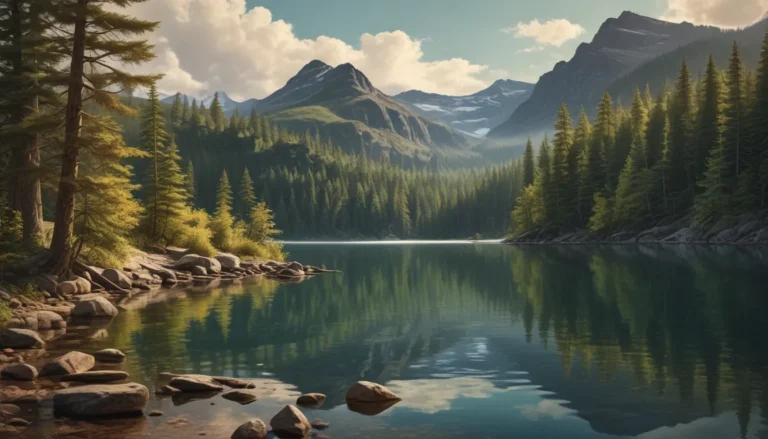The pictures we use in our articles might not show exactly what the words say. We choose these pictures to make you interested in reading more. The pictures work together with the words but don’t take their place. The words still tell you the important facts.
Snow is a natural wonder that transforms the world into a winter wonderland, captivating our senses with its pristine beauty. From the delicate snowflakes that dance in the air to the glistening blanket that covers the ground, snow holds an enchanting allure that is both mesmerizing and awe-inspiring. But beyond its visual appeal, snow plays a vital role in our ecosystem, influencing weather patterns and providing essential resources. In this article, we will explore 19 fascinating facts about snow, shedding light on its formation, properties, and impact on our environment and daily lives. Join us on a journey through the enchanting world of snow, where you'll uncover intriguing insights that will deepen your appreciation for this extraordinary natural marvel.
Unlocking the Mysteries of Snow: Key Takeaways
- Snow, a magical form of precipitation, is composed of ice crystals with unique shapes and patterns that provide insulation, water supply, and opportunities for winter sports.
- Snow can take on different colors, absorb sound, and create hazardous conditions, while also protecting plants and contributing to water supply.
- Thundersnow, a rare phenomenon, combines lightning and snowfall, adding an extra layer of intrigue to this already captivating natural wonder.
The Enchanting Formation of Snow
Snow is a meteorological phenomenon that occurs when water vapor in the atmosphere changes into ice crystals and falls to the ground. Each snowflake is made up of a unique arrangement of ice crystals, with no two snowflakes being alike. The characteristic hexagonal shape of snowflakes is a result of the ice crystals forming in the atmosphere. Under a microscope, snowflakes reveal intricate crystal patterns that showcase the remarkable beauty of nature.
The Diverse Nature of Snow
Snow can appear white, but it can also take on different colors due to impurities or sunlight effects. Due to its high air content, snow is an excellent insulator, helping to keep the ground and plants insulated during winter. Walking in freshly fallen snow creates a quiet and serene environment, thanks to snow's ability to absorb sound waves. Snowfall can vary greatly depending on temperature, humidity, and atmospheric conditions, transforming any landscape into a magical winter wonderland.
Snow’s Impact on Our Lives
Snow provides opportunities for winter sports such as skiing, snowboarding, and snowshoeing, allowing us to enjoy recreational activities in snowy landscapes. Snow plays a vital role in protecting plants and contributing to water supply, replenishing rivers, lakes, and reservoirs as it melts. Heavy snowfall can disrupt transportation, leading to road closures, flight cancellations, and delays, while also creating hazardous conditions with slippery surfaces.
Snow: Nature’s Protective Blanket
Snow acts as an insulating blanket, protecting plants from extreme cold temperatures and helping them withstand freezing conditions. Snowflakes can have varying shapes, including plates, columns, needles, dendrites, and irregular forms, depending on temperature changes during their formation. Winter sports enthusiasts flock to snowy destinations to engage in activities like skiing, snowboarding, and ice skating, making snow a valuable resource for tourism and recreation.
Exploring Snow’s Unique Qualities
Melting snow contributes to water supply, ensuring the availability of freshwater for ecosystems during warmer months. Snow can be compacted to build structures like igloos, snow forts, and sculptures, showcasing the creative potential of this versatile natural material. Thundersnow, a rare phenomenon that combines thunderstorms with snowfall, adds an electrifying element to the winter weather experience.
Unveiling the Mysteries of Snow
Snow is a fascinating natural phenomenon that brings joy and challenges to our lives. Understanding the science behind snow formation, properties, and impacts can help us better prepare for winter weather conditions and ensure our safety. By appreciating the beauty and complexity of snow, we can cultivate a deeper connection to nature and the intricate wonders it offers.
Frequently Asked Questions
-
How is snow formed? Snow forms when water vapor in the atmosphere condenses into ice crystals around a nucleus at temperatures below freezing.
-
Why do snowflakes have different shapes? Each snowflake has a unique shape due to variations in temperature, humidity, and atmospheric conditions during its formation.
-
Can snowfall create hazardous conditions? Heavy snowfall can lead to slippery surfaces, transportation disruptions, and potential risks of falls and accidents.
-
What is thundersnow? Thundersnow is a rare phenomenon that occurs when there is a thunderstorm during a snowfall, resulting in the simultaneous presence of lightning and snowfall.
-
How does snow impact wildlife? Snow presents challenges for wildlife in terms of finding food and shelter, prompting animals to adapt and migrate during the winter months.
Explore the world of snow and marvel at its captivating beauty and remarkable properties. Whether you're enjoying winter sports, admiring the delicate intricacies of snowflakes, or appreciating the protective blanket it provides for plants, snow offers a wealth of experiences and insights waiting to be discovered. Embrace the wonder of snow and let its magic enchant you with every snowflake that falls from the sky.






